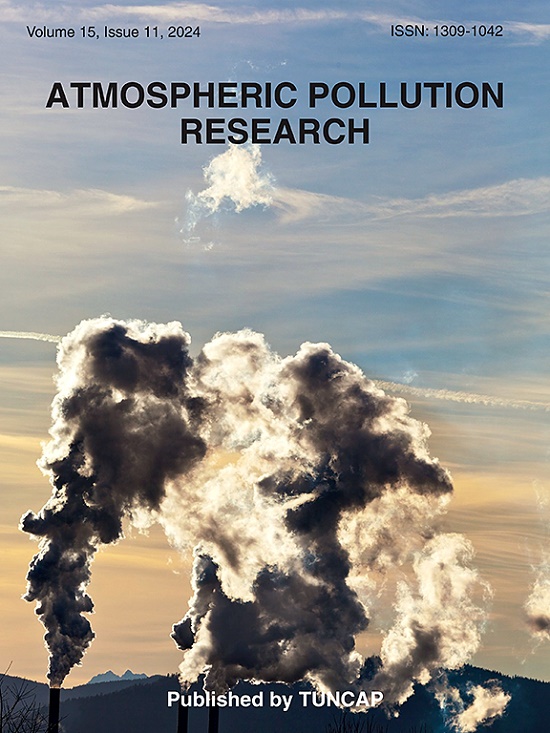Field validation of a novel passive air sampler and monitoring of semivolatile organic pollutants in the remote marine and continental boundary layer
IF 3.9
3区 环境科学与生态学
Q2 ENVIRONMENTAL SCIENCES
引用次数: 0
Abstract
Passive air sampling allows spatially high resolved study designs and access to truly remote sites, but determination of the sampling efficiency, especially that of the particulate phase remains challenging. In this work, we present a self-directional passive air sampler which relies on the Venturi principle to enhance the sample air flow and to efficiently collect the air gas and particulate phases. Sample air flow rates ranged 1–13 m3 d−1 depending on wind speed. The sampler was validated by side-by-side sampling with active air samplers at a central European continental site and a Caribbean coastal site.
The sampler is found suitable for monitoring organochlorine pesticides (OCPs) and polychlorinated biphenyls (PCBs) at trace concentrations in the remote environment (mostly 0.1–1 pg m−3 concentration range). For some OCPs these levels are among the lowest concentrations in air ever reported. The vertical distribution of polycyclic aromatic compounds, OCPs and PCBs at the rural continental site is found determined by advection in the planetary boundary layer during most seasons.
一种新型被动空气采样器的现场验证和远程海洋和大陆边界层半挥发性有机污染物的监测
被动空气采样允许空间高分辨率的研究设计和进入真正的远程站点,但采样效率的确定,特别是颗粒阶段的采样效率仍然具有挑战性。在这项工作中,我们提出了一种自定向被动空气采样器,它依靠文丘里原理来增强样品气流,并有效地收集空气中的气体和颗粒相。样品空气流量范围为1 - 13 m3 d−1,具体取决于风速。该采样器与中欧大陆站点和加勒比海沿海站点的主动空气采样器并排采样。该采样器适用于监测偏远环境中微量浓度的有机氯农药(ocp)和多氯联苯(PCBs)(主要为0.1-1 pg m−3浓度范围)。对于一些ocp来说,这些水平是有史以来空气中最低的浓度之一。多环芳香族化合物、多环芳香族化合物和多氯联苯在农村大陆站点的垂直分布是由大多数季节行星边界层的平流决定的。
本文章由计算机程序翻译,如有差异,请以英文原文为准。
求助全文
约1分钟内获得全文
求助全文
来源期刊

Atmospheric Pollution Research
ENVIRONMENTAL SCIENCES-
CiteScore
8.30
自引率
6.70%
发文量
256
审稿时长
36 days
期刊介绍:
Atmospheric Pollution Research (APR) is an international journal designed for the publication of articles on air pollution. Papers should present novel experimental results, theory and modeling of air pollution on local, regional, or global scales. Areas covered are research on inorganic, organic, and persistent organic air pollutants, air quality monitoring, air quality management, atmospheric dispersion and transport, air-surface (soil, water, and vegetation) exchange of pollutants, dry and wet deposition, indoor air quality, exposure assessment, health effects, satellite measurements, natural emissions, atmospheric chemistry, greenhouse gases, and effects on climate change.
 求助内容:
求助内容: 应助结果提醒方式:
应助结果提醒方式:


